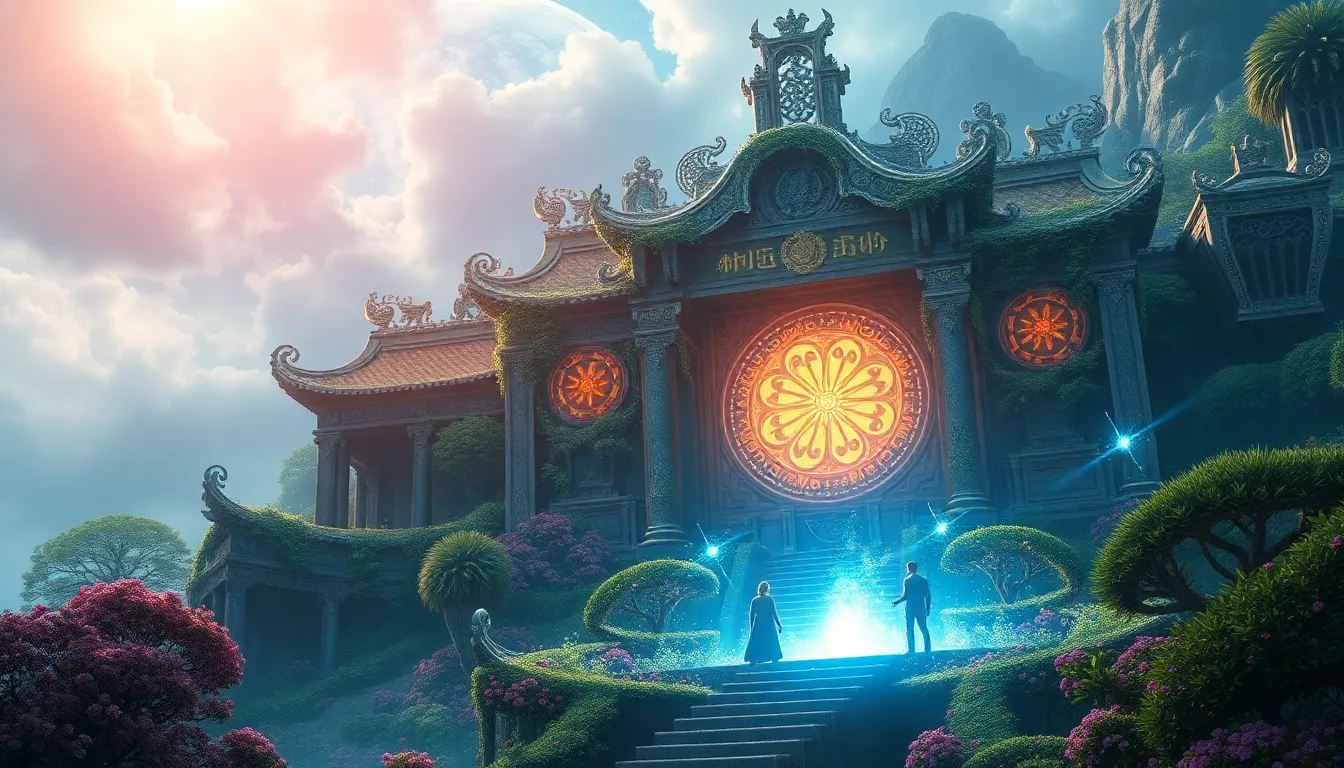The Legendary Kingdom of the Celestial Garden: Myths of Abundance
I. Introduction to the Celestial Garden
The myth of the Celestial Garden has transcended borders and cultures, symbolizing a utopia where nature flourishes in harmony. This mythical garden serves as a metaphor for abundance, representing an ideal state of existence filled with peace, prosperity, and fertility.
Originating from various civilizations, the Celestial Garden is found in ancient texts, folklore, and religious teachings, each interpreting it through their unique cultural lens. This article explores the rich history, symbolism, and contemporary relevance of the Celestial Garden myth, highlighting its significance in promoting ideals of harmony with nature.
II. Historical Context of the Celestial Garden
Ancient texts and artifacts from civilizations such as Mesopotamia, India, and China reference the Celestial Garden, showcasing its deep-rooted presence in human culture. For instance, the Epic of Gilgamesh describes a garden of the gods, while the Garden of Eden in the Bible represents a divine paradise.
The evolution of this myth reflects the changing values and beliefs of societies over time, with each culture adapting the concept to resonate with their spiritual and philosophical ideas. Real historical gardens, such as the Hanging Gardens of Babylon and the lush landscapes of ancient Persia, further cement the notion of a paradise on Earth, serving as inspirations for this enduring myth.
III. Symbolism of Abundance in the Celestial Garden
The Celestial Garden is rich in symbols of abundance, fertility, and growth. In mythology, abundance is often interpreted as a divine blessing, where the earth yields its bounty without restraint. The garden represents not only physical nourishment but also spiritual fulfillment.
- Fertility: The presence of fruitful trees, vibrant flowers, and flowing waters signifies life and rejuvenation.
- Prosperity: The garden’s overflowing harvests embody wealth and abundance, often associated with divine favor.
- Growth: The cyclical nature of life within the garden illustrates the importance of renewal and regeneration.
Nature and elemental forces play a crucial role in the narrative of the Celestial Garden, often depicted as nurturing entities that promote growth and prosperity.
IV. Key Figures in the Myths of the Celestial Garden
Throughout the legends surrounding the Celestial Garden, numerous deities and mythical beings emerge as central figures. These characters often embody the qualities associated with the garden, such as fertility, wisdom, and protection.
- Deities: Gods and goddesses like Demeter from Greek mythology and Flora from Roman lore are often linked to the flourishing nature of the garden.
- Legendary Heroes: Heroes such as Hercules and Persephone embark on quests that lead them to the Celestial Garden, symbolizing the pursuit of enlightenment and abundance.
- Mythical Creatures: Guardians of the garden, such as unicorns and phoenixes, represent purity and immortality, further enhancing the garden’s mystical allure.
V. The Geography of the Celestial Garden
The landscape of the Celestial Garden is often described as a breathtaking panorama, filled with lush greenery, vibrant flowers, and serene waters. This idyllic setting serves as a backdrop for the tales and lessons derived from the garden.
Comparisons can be drawn between the mythological garden and real-world paradises, such as the exquisite gardens of Versailles or the tranquil beauty of Kyoto. Both evoke a sense of peace and connection to nature.
Symbolic geography within the myth emphasizes the significance of location and environment. The garden is often portrayed as being in an unreachable realm, reflecting the human desire for a perfect existence.
VI. The Role of Rituals and Offerings
Rituals and offerings are integral to the mythology of the Celestial Garden, serving as expressions of gratitude and reverence towards the divine. Traditional practices often involve celebrating the cycles of nature and the changing seasons.
- Seasonal Festivals: Festivals such as the Spring Equinox and Harvest Moon celebrate abundance and the gifts of nature, allowing communities to connect with the cycles of life.
- Offerings: Ritual offerings, such as fruits, flowers, and grains, symbolize appreciation for the earth’s bounty and are often made to deities associated with the garden.
In contemporary culture, these rituals are revived in various forms, promoting awareness of sustainability and the importance of caring for the environment.
VII. Art and Literature Inspired by the Celestial Garden
The Celestial Garden has inspired countless works of art and literature throughout history. Ancient civilizations depicted the garden in their art and architecture, using intricate designs to convey its beauty and significance.
In literature, poets and writers have captured the essence of the garden through verses and stories, infusing their works with themes of nature, abundance, and longing for paradise.
- Ancient Art: Murals and sculptures often illustrate scenes from the Celestial Garden, showcasing its divine beauty.
- Influence on Folklore: Tales of the garden have permeated folklore, inspiring narratives that explore human relationships with nature.
- Modern Adaptations: Contemporary films, books, and visual art continue to reinterpret the myth, reflecting society’s ongoing connection to themes of abundance and paradise.
VIII. Lessons from the Myths: Sustainability and Harmony
The myths surrounding the Celestial Garden impart valuable lessons about sustainability and harmony with nature. Embedded within these stories are environmental messages that emphasize the importance of balance and respect for the earth.
- Environmental Awareness: The narratives encourage a connection to the natural world, highlighting the need for conservation and responsible stewardship.
- Modern Movements: Today, sustainability movements draw inspiration from these myths, advocating for practices that promote ecological balance.
- Coexistence: The garden serves as a reminder of the importance of living in harmony with nature, rather than in conflict.
IX. Contemporary Relevance of the Celestial Garden Myth
The Celestial Garden myth continues to inspire modern communities and movements, serving as a beacon of hope and an aspiration for a better future. In an age where urbanization poses challenges to nature, the ideals of abundance remind us of the importance of preserving our environment.
- Urban Gardening: Many urban communities are embracing the concept of the Celestial Garden through initiatives that promote green spaces and community gardens.
- Eco-Tourism: The myth is revived through eco-tourism, where travelers seek to experience and engage with nature in sustainable ways.
- Conservation Efforts: Organizations dedicated to conservation often invoke the spirit of the Celestial Garden, working to protect natural habitats and promote biodiversity.
X. Conclusion: The Enduring Legacy of the Celestial Garden
In conclusion, the myth of the Celestial Garden holds profound significance, offering lessons about abundance, sustainability, and our relationship with nature. As we navigate the complexities of modern life, the ideals represented by the garden remind us of the beauty of the natural world and the importance of nurturing it.
As we reflect on the enduring legacy of the Celestial Garden, let us strive to embody its principles in our lives, fostering a sense of abundance not just for ourselves, but for future generations as well. By doing so, we can create a harmonious existence, reminiscent of the legendary kingdom that continues to inspire us today.



